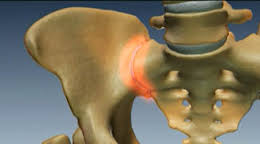 THREE NEW STUDIES: CT SCANS UNCOVER WIDESPREAD SI JOINT DEGENERATION (Orthopedics This Week)
THREE NEW STUDIES: CT SCANS UNCOVER WIDESPREAD SI JOINT DEGENERATION (Orthopedics This Week)
CT Scans Uncover Widespread but Asymptomatic SI Joint Deterioration
Sometimes you must return to the basics in order to go forward. Such was the thinking behind new research on sacroiliac (SI) joint degeneration from Stanford University and Bellevue Bone and Joint Physicians in Washington. Jonathan-James Eno, M.D., an orthopedic resident at Stanford, told OTW, “For our study, which was just published in The Journal of Bone and Joint Surgery, the goal was to establish a baseline prevalence of sacroiliac joint degeneration in the asymptomatic population. We undertook this topic because the prevalence of low back pain continues to be a huge burden on society, and the potential for the SI joint as a source of low back pain has led to a renewed interest in surgical or procedural intervention, including injections and fusions. Arthrodesis has made a comeback recently, in part, because of the introduction of more minimally invasive approaches.”
“Surgeons have traditionally relied heavily on radiographic findings of SI joint degeneration to implicate it as a source of pain. We wanted to evaluate how many asymptomatic patients had radiographic evidence of underlying SI joint pathology. A high prevalence of degenerative changes in the asymptomatic population would suggest that these changes are not necessarily indicative of a source of low back pain in each patient.”
“We reviewed 500 consecutive pelvic computed tomography (CT) scans of patients who had no history of pain in the lower back or pelvic girdle. We excluded individuals who were skeletally immature, had a history of spinal instrumentation, a history of low back, pelvic, or hip pain, a history neurological disease, and those who had undergone prior surgery; we were left with 373 CT scans (746 sacroiliac joints).”
“The average age of patients was 57, and we had roughly 1:1 male to female ratio. Each CT was reviewed by the senior author and an orthopedic trauma fellow, then it was classified using our proposed novel classification system. The classification system ranges from 0 (no degenerative changes) to 3 (complete ankylosis of the SI joint). We found that the overall prevalence of SI joint degeneration in at least one joint was 65%; there was significant SI joint degeneration (type 2/3) in almost 31% of the SI joints in our cohort.”
“The message is simply to be cautious when correlating radiographic findings with clinical symptoms. It may be tempting to attribute lower back or pelvic girdle pain to SI joint degeneration seen on a CT, but further investigation to confirm the source of pain may be warranted. Our study should not necessarily discourage our colleagues from operating on the SI joint; it should, as is the case with all of medicine, reinforce the need to correlate clinical presentation, radiographic findings, and confirmatory studies to ultimately determine the correct diagnosis and guide proper treatment.”

 Tiger Buford – retained recruiter dissecting orthopedics for you
Tiger Buford – retained recruiter dissecting orthopedics for you